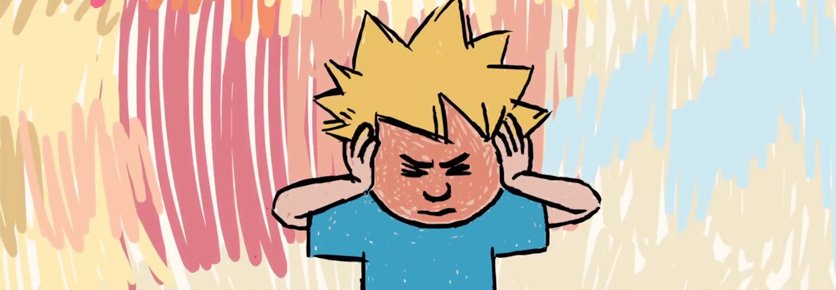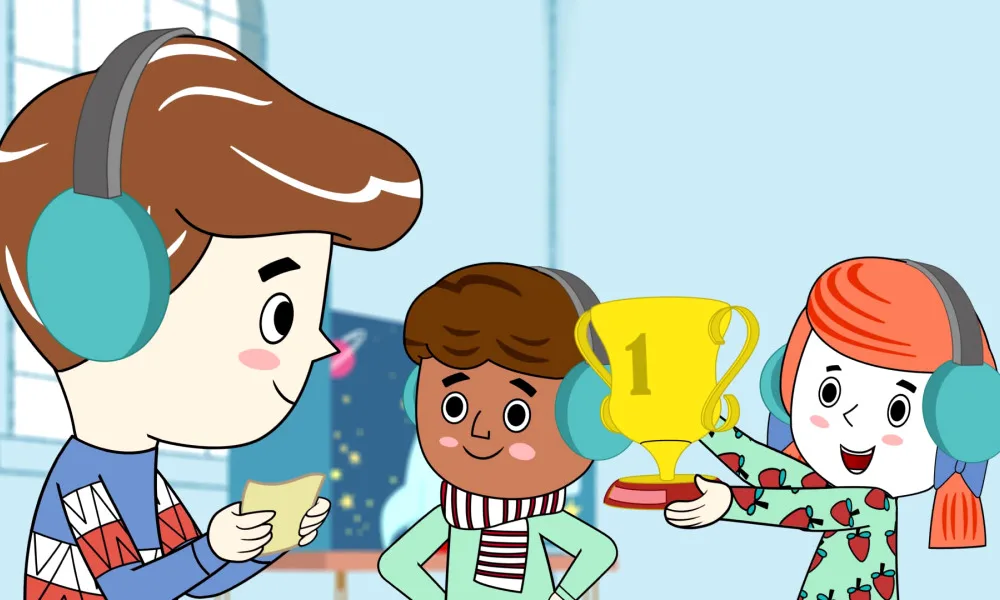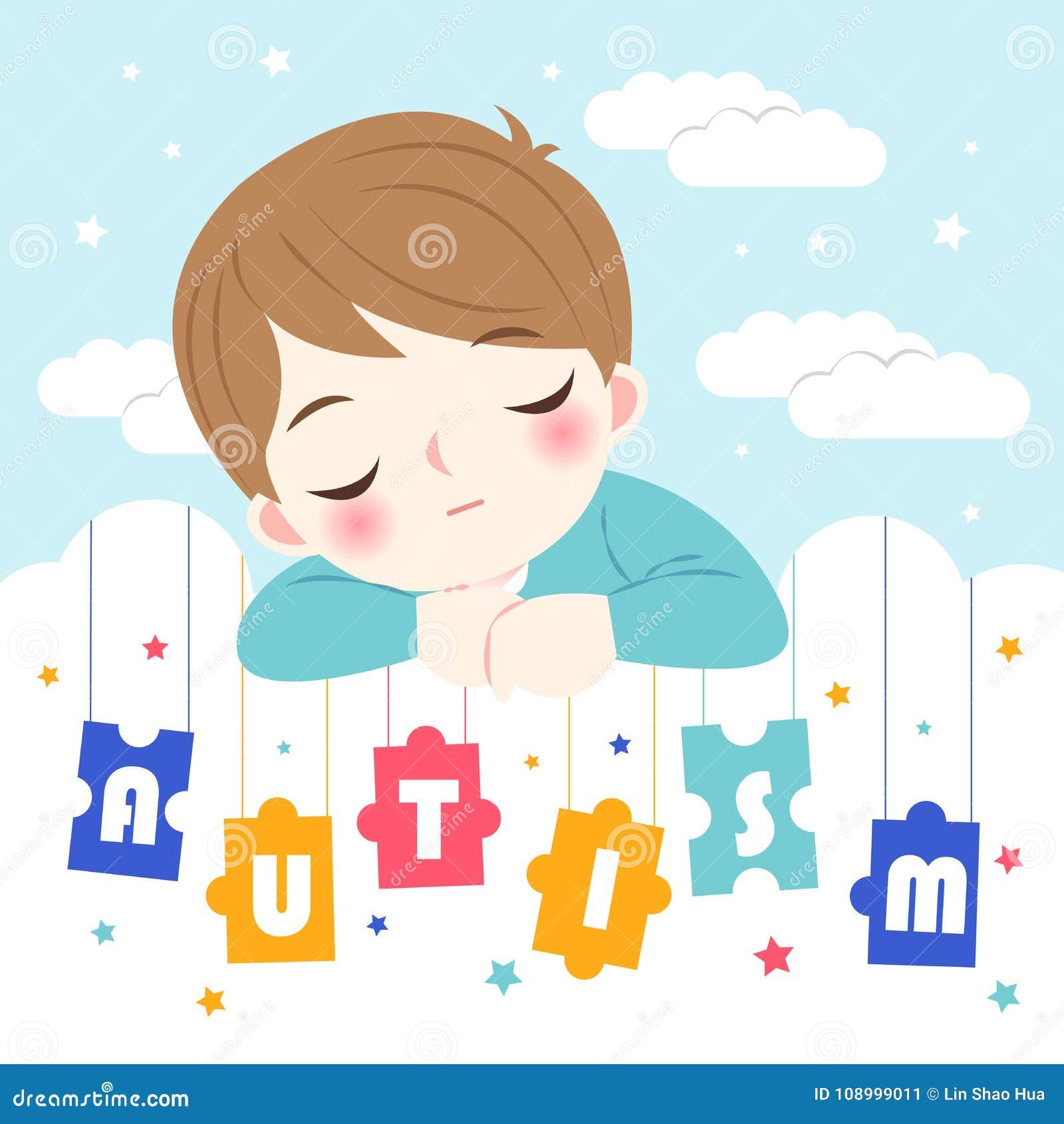Autism Animated Video: A Valuable Tool for Understanding

Autism spectrum disorder (ASD) is a complex neurodevelopmental condition that affects communication, social interaction, and behavior. One of the challenges in understanding autism is its wide range of symptoms and presentations, which can vary greatly from person to person. This can make it difficult for individuals without direct experience with autism to fully grasp the complexities of the condition and its impact on individuals and their families.

Autism Animated Videos have emerged as a powerful tool to address this challenge. Motion pictures can provide a visually engaging and accessible way to convey information about autism and its diverse manifestations. Through animation, creators can humanize the experiences of individuals with autism, demonstrating their challenges and strengths in a relatable and emotionally compelling format.
Understanding Autism Through Animation
Autism is a spectrum disorder, meaning that its symptoms and severity can vary widely from one individual to another. This diversity in presentation can make it challenging for those without direct experience with autism to fully comprehend the condition. Animated videos have the unique ability to bridge this gap by providing a visual and engaging representation of the autistic experience.
The Power of Storytelling
One of the key strengths of animated videos in explaining autism lies in their ability to tell compelling stories. By creating relatable characters and narratives, these animations can help audiences understand the challenges faced by individuals with autism, as well as their unique perspectives and strengths. Storytelling through animation allows viewers to connect with the experiences depicted on a deeper emotional level, fostering empathy and understanding.
Breaking Down Complex Concepts
Autism is a complex condition that involves a range of social, communication, and behavioral differences. Animated videos can break down these complexities into easily digestible visual representations. For example, animations can illustrate the sensory sensitivities experienced by some individuals with autism, or demonstrate the difficulties they may face in interpreting social cues and nonverbal communication.
Accessibility and Inclusivity
One of the significant advantages of animated videos is their accessibility. These videos can be easily distributed online and shared across various platforms, reaching a wide audience. Moreover, by incorporating inclusive representation and diverse characters, animations can help promote acceptance and understanding of autism within different communities and cultures.
The Power of Animated Videos in Explaining Autism

Animated videos offer several key advantages for explaining autism:
Visualization
Animation allows the depiction of abstract concepts and complex behaviors, making them more tangible and understandable for audiences. By visualizing the experiences of individuals with autism, animations can help bridge the gap between theoretical knowledge and practical understanding.
Personalization
Animated characters can be designed to represent individuals with autism, providing specific examples and relatable narratives. This personalization can help viewers connect with the experiences being depicted, fostering empathy and understanding.
Emotional Impact
Animation has the power to generate empathy and connection by visualizing lived experiences. By bringing these experiences to life through engaging visuals and storytelling, animated videos can evoke emotional responses that can be more impactful than factual information alone.
Accessibility
Animated videos can be widely distributed and accessed online, reaching a broad audience beyond traditional educational and medical settings. This accessibility allows for widespread dissemination of information about autism, contributing to increased awareness and understanding.
Creating Empathy with Animated Depictions of Autism

By humanizing the experiences of individuals with autism, animated videos can help create empathy and break down barriers. Animated characters can demonstrate the challenges faced by individuals with autism, such as difficulty with social interactions, sensory sensitivities, and restricted interests. At the same time, animations can showcase the strengths and abilities of individuals with autism, including their creativity, determination, and unique perspectives.
Representation and Relatability
Effective animated depictions of autism often feature relatable characters that audiences can connect with. By creating characters that accurately represent the diverse experiences of individuals with autism, animations can help viewers develop a deeper understanding and appreciation for the autistic community.
Emotional Storytelling
Animated videos have the power to evoke emotional responses through compelling storytelling. By portraying the joys, struggles, and triumphs experienced by individuals with autism, animations can foster empathy and promote a greater appreciation for the autistic experience.
Challenging Stereotypes and Misconceptions
Unfortunately, many misconceptions and stereotypes surrounding autism still exist. Animated videos can be powerful tools in challenging these harmful narratives by presenting authentic and nuanced representations of individuals with autism.
Case Study: The animated film “Mary and Max” follows the unlikely friendship between an autistic girl in Australia and a lonely man in New York. The film realistically portrays the social difficulties and emotional isolation experienced by individuals with autism, while also highlighting their capacity for connection and love.
Top Animation Techniques for Portraying Autism

Effective animated depictions of autism require careful consideration of animation techniques such as:
Visual Cues
Using sensory-rich visuals to convey sensory sensitivities, attention challenges, and repetitive behaviors. These visual cues can help viewers understand the unique experiences and perspectives of individuals with autism.
Exaggeration and Cartoonish Elements
Employing exaggerated features or cartoonish elements to emphasize communication difficulties, social oddities, or restricted interests. These techniques can effectively communicate the autistic experience in a visually engaging and memorable way.
Slow Motion and Time-Lapse
Utilizing slow-motion sequences to illustrate the perception of time, or using time-lapse to depict repetitive or perseverative behaviors. These techniques can provide insights into the lived experiences of individuals with autism.
Inner Monologues and Subtitles
Animating inner thoughts and emotions to provide insight into the subjective experiences of individuals with autism. This technique can help audiences understand the thought processes and perspectives of autistic individuals.
Innovative Ways to Use Animation for Autism Education
Animation is not only a tool for raising awareness but also a valuable educational resource for diverse audiences:
School Curriculum
Animated videos can supplement traditional textbooks in schools, providing engaging and instructive materials for students. These animations can help educators effectively convey information about autism, fostering understanding and acceptance among students.
Healthcare Training
Animated simulations can train healthcare professionals on the identification and management of autism symptoms. By visualizing various scenarios and behaviors, animations can enhance the practical knowledge and skills of healthcare providers working with individuals with autism.
Family Support
Animated videos can provide practical advice and support to families affected by autism, addressing common concerns and empowering caregivers. These animations can offer guidance on communication strategies, behavior management techniques, and strategies for promoting inclusion and acceptance.
The Impact of Animated Content on Autism Awareness

Animated videos have played a significant role in raising awareness about autism and promoting inclusivity. By presenting relatable and engaging stories, these animations have helped to humanize the experiences of individuals with autism and challenge misconceptions about the condition.
Reaching a Wider Audience
The accessibility and shareability of animated videos have enabled them to reach a broader audience than traditional educational materials. Through social media and online platforms, these animations have the potential to spread awareness and understanding across diverse communities.
Fostering Empathy and Understanding
By depicting the lived experiences of individuals with autism, animated videos have the power to foster empathy and understanding among viewers. This increased empathy can contribute to the creation of more inclusive and supportive environments for individuals on the autism spectrum.
Encouraging Dialogue and Discussion
Compelling animated depictions of autism can serve as conversation starters, encouraging dialogue and open discussions about the condition. These discussions can lead to greater understanding, acceptance, and efforts to support individuals with autism and their families.
Exploring Different Styles of Animation for Autism Representation
Animation offers a wide range of styles and techniques that can be employed to represent the experiences of individuals with autism effectively. From traditional hand-drawn animations to computer-generated graphics and stop-motion techniques, each style brings its unique strengths and perspectives.
Traditional Hand-Drawn Animation
Hand-drawn animations can capture the nuances and subtleties of human expression and emotion, allowing for authentic and relatable depictions of individuals with autism. This style often creates a warm and personal connection with viewers.
Computer-Generated Animation
Computer-generated animations offer a high degree of control and precision, enabling creators to accurately depict specific behaviors and scenarios related to autism. This style can be particularly effective in visualizing abstract concepts or sensory experiences.
Stop-Motion Animation
Stop-motion animation, which involves the frame-by-frame manipulation of physical objects, can lend a tactile and tangible quality to representations of autism. This style can be particularly effective in depicting repetitive behaviors or sensory experiences.
Mixed Media Approaches
Combining different animation styles and techniques can create unique and impactful representations of autism. For example, combining hand-drawn elements with computer-generated elements can blend the warmth of traditional animation with the precision of digital techniques.
Best Practices for Designing Animated Videos about Autism
Creating effective and respectful animated videos about autism requires careful consideration and adherence to best practices. These best practices ensure that the animations accurately represent the autistic experience while avoiding harmful stereotypes or insensitive portrayals.
Collaboration with Autistic Individuals and Experts
Involving autistic individuals, their families, and experts in the autism community is crucial for ensuring authentic and accurate representations. Their insights and perspectives can provide valuable guidance on depicting autism in a respectful and meaningful way.
Sensitivity to Diversity within the Autism Spectrum
Recognizing and representing the diverse range of experiences and characteristics within the autism spectrum is essential. Avoiding generalizations and stereotypes, and instead showcasing the individuality and uniqueness of each person with autism, can help create more inclusive and accurate portrayals.
Clear and Accessible Communication
Using clear and straightforward language, visuals, and storytelling techniques can enhance the accessibility of animated videos about autism. Ensuring that the content is easily understandable for audiences of all ages and backgrounds can maximize the impact of the animations.
Positive and Empowering Narratives
Focusing on positive and empowering narratives that highlight the strengths, talents, and resilience of individuals with autism can challenge negative stereotypes and inspire viewers. By showcasing the capabilities and achievements of autistic individuals, animated videos can promote a more inclusive and accepting society.
Engaging the Audience: Animated Strategies for Autism Advocacy
Engaging audiences in meaningful ways is essential for advocating for autism awareness and acceptance. Animated strategies can help capture attention, evoke emotions, and inspire action among viewers.
Personal Stories and Testimonials
Sharing personal stories and testimonials from individuals with autism and their families can create powerful connections with audiences. These authentic narratives can humanize the experiences of those living with autism and foster empathy and understanding.
Interactive Elements and Quizzes
Incorporating interactive elements such as quizzes, polls, or decision-making scenarios into animated videos can increase engagement and encourage active participation from viewers. These interactive features can enhance learning and retention of information about autism.
Social Media Campaigns and Challenges
Launching social media campaigns and challenges centered around animated content can amplify reach and engagement. Encouraging users to share, comment, or participate in challenges related to autism awareness can spark conversations and raise visibility on social platforms.
Collaborations with Influencers and Advocates
Partnering with influencers, advocates, or organizations in the autism community can expand the reach and impact of animated advocacy efforts. Leveraging the networks and platforms of these partners can help raise awareness, drive engagement, and mobilize support for autism-related causes.
Animating Stories of Individuals Living with Autism
One of the most compelling ways to educate and advocate for autism awareness is by animating the stories of individuals living with autism. By sharing these personal narratives through animation, creators can offer a window into the lived experiences, challenges, and triumphs of autistic individuals.
Celebrating Achievements and Milestones
Animating stories that celebrate the achievements, milestones, and successes of individuals with autism can inspire and uplift viewers. Highlighting moments of growth, resilience, and joy can showcase the diverse talents and capabilities of autistic individuals.
Addressing Challenges and Realities
Illustrating the challenges, obstacles, and realities faced by individuals with autism can help raise awareness and promote understanding. By sensitively portraying difficult experiences such as sensory overload, communication barriers, or social isolation, animations can foster empathy and compassion.
Promoting Inclusion and Acceptance
Animating stories that emphasize the importance of inclusion, acceptance, and support for individuals with autism can drive positive change. By showcasing the value of diversity, empathy, and understanding, these animations can inspire viewers to create more inclusive and welcoming communities.
Conclusion
In conclusion, animated videos have the power to transform perceptions, educate audiences, and advocate for greater awareness and acceptance of autism. By leveraging animation techniques, innovative approaches, and best practices, creators can effectively communicate the complexities and nuances of the autistic experience. Through engaging storytelling, relatable characters, and authentic representations, animated videos can bridge gaps, challenge stereotypes, and promote empathy and inclusivity for individuals with autism. As we continue to explore the intersection of animation and autism advocacy, let us strive to amplify diverse voices, celebrate unique perspectives, and foster a more compassionate and understanding society for all.





